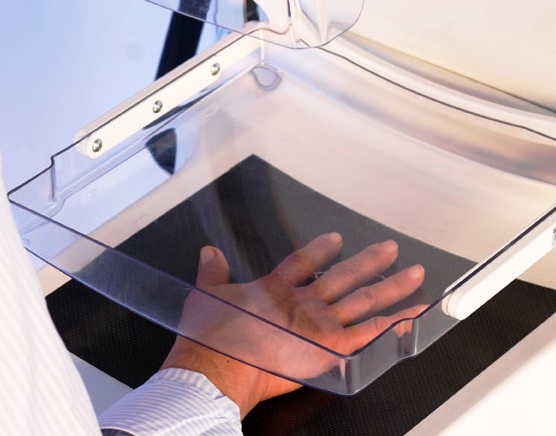Last Updated on July 31, 2019
Radiogrammetry is a technique that uses a conventional radiograph for the assessment of bone status by using cortical width as a measure of bone strength.
Osteoporosis is defined as a systemic skeletal disease characterized by low bone mass and micro-architectural deterioration of bone tissue, with a consequent increase in bone fragility and susceptibility to fractures.
Measurement of bone mineral density forms the basis for the working definition of osteoporosis.
Fractures are the hallmark of osteoporosis. The risk of fracture in osteoporosis is determined by the risk of fall, the force of impact and the strength of bone. Reduced bone mineral density is an important component of fracture risk in osteoporosis.
Following methods are used for measuring bone mineral density
- Radiography
- Radiogrammetry
- Radiographic absorptiometry
- Single- (SXA) and dual X-ray absorptiometry (DXA)
- Spinal and peripheral quantitative computed tomography (QCT/ pQCT)
- Quantitative ultrasound (QUS)
- Magnetic resonance imaging.
In this article, we would discuss radiogrammetry and digital Xray radiogrammetry.
Digital Xray Radiogrammetry
Digital x-ray radiogrammetry uses computerized radiogrammetric analysis and textural analysis of a digitized radiograph of the hand. Information from the middle three metacarpals is used by the system to generate a BMD estimate. Digital Xray Radiogrammetry was approved by US FDA in 1999.
A plain radiograph of the non-dominant hand (preferably) is taken under standardized conditions. After checking the quality of the radiograph, it is placed in a scanner, which digitizes the image. The initial computer processing identifies anatomical landmarks and automatically defines the ‘Regions of Interest’ (ROIs). The digitized image is displayed on the screen with the ROIs superimposed. There is no operator activity involved in placing the regions.
The system computes the Digital x-ray radiogrammetry BMD [DXR-BMD] based on the cortical thickness of the ROIs. About one centimeter of both the cortices in ROI is studied. The cortical thickness is measured 118 times per vertical centimeter of the ROI in each cortex. Thus a total of 236 measurements per centimeter are made over the two cortices.
The resulting DXR-BMD estimate is presented as
- Absolute bone mineral density estimate in g/cm 2
- Graphic form, in a DXR-BMD versus age plot, together with a reference curve
- T score
- Z score.
Repeated studies have shown a high correlation of DXR -BMD with DXA-BMD. It is said to be good in predicting fractures as well as discriminate patients with and without fractures.
Moreover, DXR-BMD can also detect a change in bone density with time and anti-resorptive therapy.
The investigation is operator independent.
